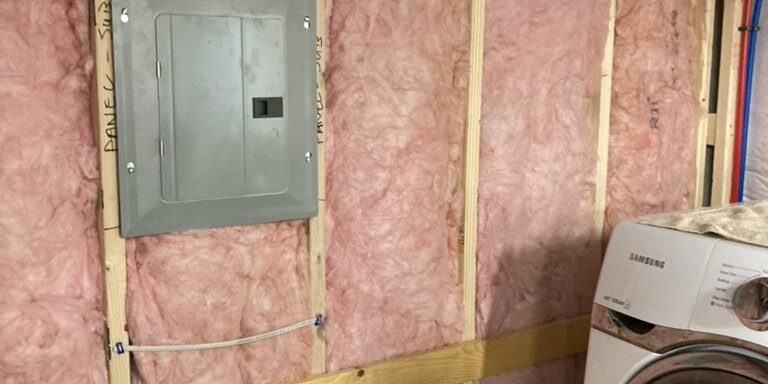Properly installing insulation is one of the most effective ways to reduce heat transfer, lower your energy bills, and improve indoor air quality. But when insulation is installed incorrectly—or worse, neglected altogether—it can lead to a host of problems including moisture damage, poor efficiency, and even health hazards. Whether you’re a homeowner considering a DIY project or researching professional insulation contractors, understanding what not to do is critical.
In this post, we’ll highlight some of the most common mistakes people make during insulation installation, and how to avoid them to protect your home improvement investment.
1. Using the Wrong Insulation Material for the Space
Not all insulation is created equal, and using the wrong material in the wrong space can lead to costly consequences. For example:
- Fiberglass batts should not be used in areas with high humidity, such as crawl spaces or basements, as they can trap moisture and encourage mold or mildew.
- Spray foam insulation works well for airflow control but must be applied carefully around electrical wiring, chimneys, or light fixtures.
- Some older homes may still contain vermiculite insulation, which often includes asbestos—a major health risk if disturbed. According to the United States Environmental Protection Agency (EPA), homeowners should never handle or remove insulation containing asbestos without proper training and gear.
When in doubt, choose the appropriate thermal insulation for your specific climate, home layout, and budget—or consult an insulation contractor for guidance.
2. Skipping Air Sealing Before Insulation Installation
Insulation slows the transfer of heat, but it doesn’t stop air leaks. That’s why sealing gaps is just as important as installing insulation. Ignoring this step means outside air—and often water—can still enter your home, reducing your thermal insulation’s effectiveness.
Focus on sealing around:
- Windows and doors
- Ducts, drywall seams, and plumbing penetrations
- Eaves, chimneys, and soffit vents
- Attic hatches and rafters
Use caulk or expanding foam to seal gaps before applying insulation. Proper air sealing prevents condensation, pest intrusion, and energy loss.
3. Blocking Critical Ventilation Areas
In areas like the attic, improper insulation can block ventilation paths and trap humidity, damaging your roof, gutters, and asphalt shingles. Ventilation is essential to regulate moisture levels and prevent mold, mildew, and structural rot.
To avoid this mistake:
- Do not block soffit vents, eaves, or roof ventilation paths
- Use baffles to direct airflow from intake to exhaust vents
- Maintain space around light fixtures, chimneys, and rafters
Without airflow, your attic becomes a breeding ground for heat buildup, condensation, and even pests like squirrels or rodents.
4. Leaving Gaps or Compressing Insulation
Insulation only works when it fills the space it’s intended to insulate. Leaving gaps, compressing the fibers, or overstuffing reduces its R-value and overall performance.
Common mistakes include:
- Not fitting insulation snugly around framing, ducts, or windows
- Compressing fiberglass batts during installation
- Overlooking hard-to-reach areas like the attic corners or behind electrical wiring
Each missed spot becomes a potential leak in your building envelope, allowing heat and cold air to move freely and raising your energy bills.
5. Removing Old Insulation Without Inspection
Not all old insulation needs to be removed. Unless it’s damaged, wet, moldy, or contaminated with rodents, it may still provide some value and can be supplemented with new insulation.
However, proceed with caution:
- If your home was built before 1990, schedule an inspection to check for asbestos or vermiculite
- Look for signs of water damage, pests, or structural issues
- Disturbing hazardous materials can spread dust, mold spores, and toxins
Avoid creating unnecessary mess or risk—call a professional for an inspection and free estimate before removing anything.
;6. Forgetting the Vapor and Radiant Barriers
Installing a vapor barrier is vital in areas prone to moisture, like basements and crawl spaces. It helps control condensation and prevents moisture from soaking into insulation materials. Similarly, in warmer climates, a radiant barrier in the attic can reflect heat and reduce air conditioning costs.
Omitting these barriers can:
- Decrease efficiency
- Promote mold and mildew growth
- Damage your insulation and nearby drywall, flooring, or roofing
Always check climate-specific recommendations for barrier placement and material compatibility.
7. Neglecting Pest Control and Maintenance
Insulation can be a cozy nesting ground for pests like squirrels, rodents, and insects—especially in attics, crawl spaces, and behind siding. Poorly sealed insulation invites pests and the leakage of valuable heat.
To prevent infestation:
- Seal entry points in the building envelope
- Use pest-resistant insulation like mineral wool
- Combine pest control with regular insulation inspection
Rodents can tear through insulation, chew electrical wiring, and leave behind harmful droppings—all of which diminish insulation quality and raise health risks.
Let the Pros Handle It Right the First Time
While DIY insulation might seem tempting, the margin for error is wide. Between choosing the right material, sealing the right gaps, and navigating health hazards, it’s no wonder so many projects go off-track. At Insulation Pros, we offer expert insulation services tailored to your house, climate, and budget. We handle:
- Installing attic insulation
- Spray foam and cellulose applications
- Basement, floor, and wall insulation
- Pest control integration and roofing tie-ins
- Comprehensive energy and insulation inspection
Our work is backed by a warranty, expert knowledge, and years of experience in enhancing thermal insulation across all areas of the home.
Stop wasting energy and money—get your home insulated the right way.
Contact Insulation Pros today for a free estimate and insulation inspection. Let us help you protect your home, lower your bills, and improve your comfort for years to come.








